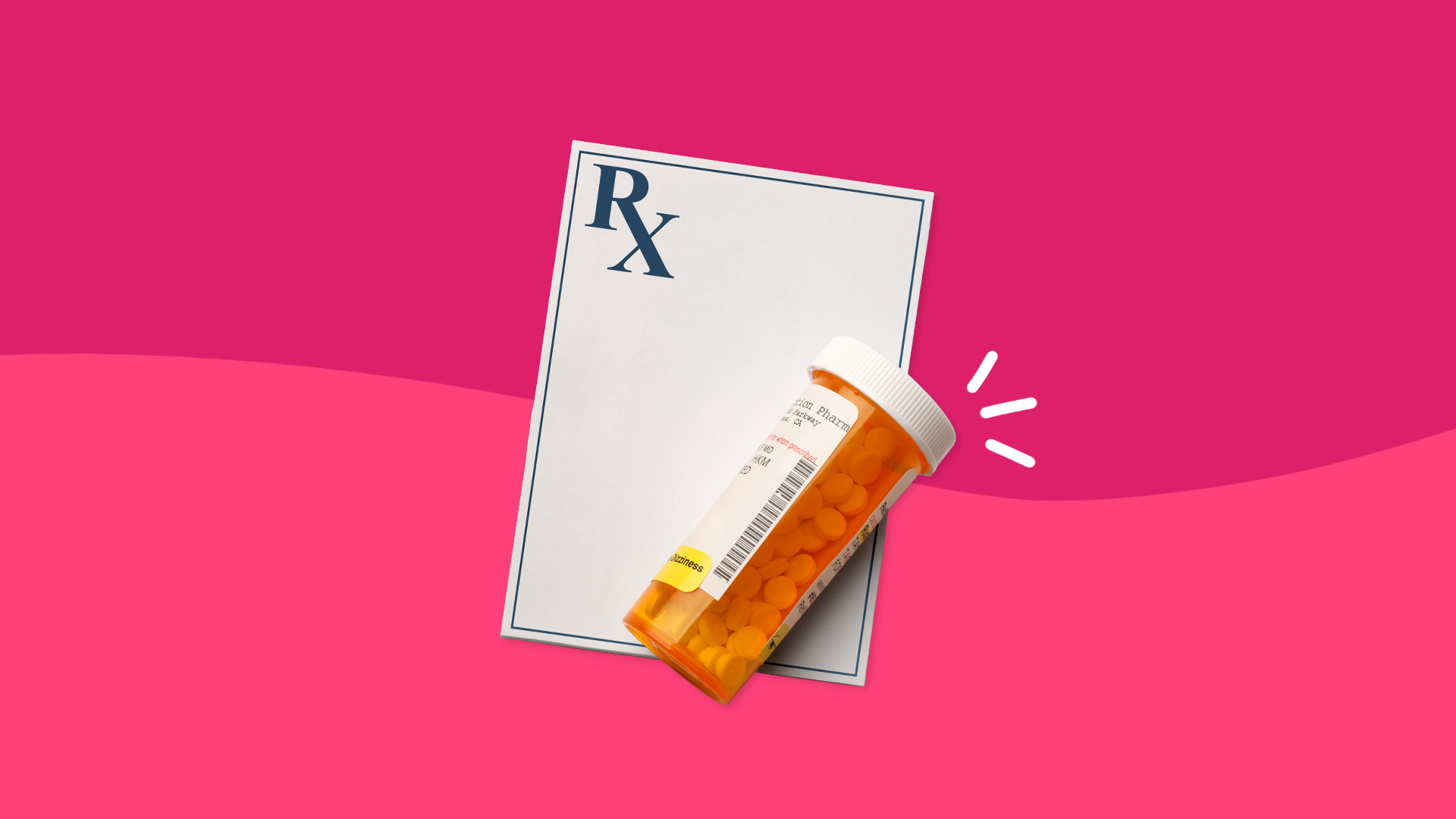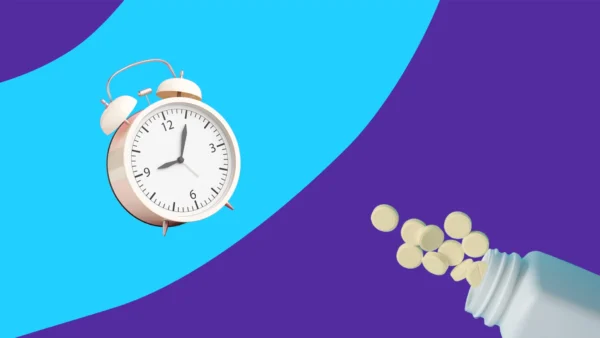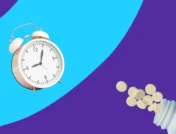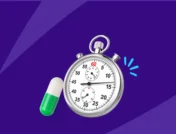Common Xifaxan side effects | Serious side effects | C. difficile-associated diarrhea | How long do side effects last? | Warnings | Interactions | How to avoid side effects
Xifaxan is a brand-name prescription antibiotic that is prescribed to treat traveler’s diarrhea caused by noninvasive E. coli and irritable bowel syndrome with diarrhea (IBS-D). It is also used to reduce the risk of central nervous system complications due to advanced liver disease (hepatic encephalopathy). Even though Xifaxan is taken by mouth as a tablet, it only affects bacteria in the gut. Very little of its active ingredient, rifaximin, is absorbed into the body. As a consequence, side effects are minimal, but that doesn’t mean that there aren’t serious side effects or drug interactions. A few tips, however, can help people avoid or minimize adverse effects when taking Xifaxan.
RELATED: What is Xifaxan?
Common side effects of Xifaxan
The most common side effects of Xifaxan are:
- Nausea
- Liver problems (elevated liver enzymes)
- Swelling of the feet, hands, and arms (peripheral edema)
- Dizziness
- Fatigue
- Fluid retention around the abdomen (ascites): bloating, abdominal pain, weight gain
- Headache
- Stomach pain
- Itching
- Anemia
- Depression
- Sore throat
- Joint pain
- Fever
- Trouble breathing
- Rash
- Muscle pain
- Constipation
Serious side effects of Xifaxan
The most serious side effects of Xifaxan are:
- Clostridium difficile-associated diarrhea (CDAD)
- Drug-resistant bacterial superinfection
- Severe allergic reactions
Xifaxan and safety
Because very little rifaximin is absorbed into the body, most Xifaxan side effects are minimal. In clinical trials, many of the above side effects were reported in nearly equal numbers by both people taking Xifaxan and a placebo pill. Only 0.4% of people taking Xifaxan in clinical trials quit due to intolerable side effects, which is equal to the number of people who quit taking the placebo pill for the same reason. Serious side effects were rare (less than 1%) in clinical studies.
C. difficile associated diarrhea
C. difficile-associated diarrhea (CDAD) is a well-known hazard of antibiotics, including Xifaxan. Because antibiotics kill bacteria in the gut, they alter the microbe environment. This allows toxin-producing pathogens like C. difficile to grow out of control after treatment has ended. A C. difficile overgrowth can start weeks or months after treatment has ended and range anywhere from a mild to life-threatening infection if it develops into a severe swelling of the colon (pseudomembranous colitis).
The incidence of CDAD in people taking rifaximin is not known, but rifaximin is effective at killing off C. difficile and does not cause significant changes to the gut biome. CDAD is more likely in people who have developed rifaximin-resistant strains of C. difficile. It is also more likely to occur in people with severe liver disease. People taking Xifaxan should know to contact their healthcare provider if diarrhea recurs during treatment or in the days or weeks following treatment. They should get immediate medical help if the diarrhea is watery or bloody.
How long do Xifaxan side effects last?
Almost 97% of a rifaximin dose is excreted through the feces. Only a small amount enters the body. Most of the common gastrointestinal side effects should clear up by the time the last dose is excreted through the feces, although some side effects may get better as the body gets used to the medicine. For systemic side effects, the half-life of rifaximin is roughly six hours, so most of these side effects will clear up in less than a day after the last dose. Allergic reactions may require several days of treatment to improve. CDAD can occur up to two months after antibiotic treatment and typically takes about two weeks to treat. While some cases are mild, severe cases may have lifelong complications.
Xifaxan contraindications and warnings
All prescription drugs have contraindications and warnings. However, rifaximin is barely absorbed into the body, so it causes fewer problems than other prescription drugs.
Abuse and dependence
The U.S. Food and Drug Administration (FDA) does not consider Xifaxan to be a drug with the potential for abuse or physical dependence. Xifaxan can be discontinued at any point without causing withdrawal symptoms.
Overdose
A Xifaxan overdose is not considered hazardous. In clinical trials, the side effects of taking too much Xifaxan were the same as the side effects in people who took too much of the placebo pill. However, if too much Xifaxan is taken, call a poison helpline or get emergency medical treatment.
Restrictions
Xifaxan has few restrictions or contraindications.
People who are allergic to rifaximin or have a known hypersensitivity to rifamycin antibiotics (rifampin, rifapentine, or rifabutin) will not be given Xifaxan.
People with other pre-existing physical or medical conditions can take Xifaxan without dose reductions or extra monitoring. The only exceptions are people with severe liver impairment (Child-Pugh class C) or people with a history of pseudomembranous colitis following antibiotic treatment. They will need to be monitored for potentially severe side effects.
Pregnancy and nursing
Although there is no information to determine the risk, rifaximin is prescribed to women in the second and third trimesters of a pregnancy, but it is avoided in the first trimester. In animal studies, excessive doses given to animals in the early stages of a pregnancy produced higher levels of birth defects.
As far as breastfeeding is concerned, there is also no information on whether Xifaxan affects lactation, transfers into human breast milk, or causes problems in a nursing infant. Because so little of the drug is absorbed into the body, healthcare providers believe it is safe to breastfeed when taking rifaximin.
Children
Xifaxan is FDA-approved as a safe and effective treatment of E. coli-induced traveler’s diarrhea in children as young as 12 years of age. It is not FDA approved for any other conditions in children. However, healthcare providers may prescribe Xifaxan off-label to children as young as 3 years old as an add-on treatment for recurrent C. difficile infections. However, the safety and effectiveness of rifaximin in children younger than 12 years have not been determined.
Seniors
There is no evidence that Xifaxan is less effective or less safe in people 65 years and older than it is in younger adults.
Xifaxan interactions
Because very little rifaximin is absorbed into the body, Xifaxan has comparatively few drug interactions that concern healthcare providers. The great majority of these drug interactions are negligible in people with a healthy liver function, so healthcare providers usually do not worry about drug interactions unless liver impairment is present.
- P-gp inhibitors: P-glycoproteins (P-gp) are proteins that attach to “bad” substances absorbed into the intestinal tissues and pump them back out into the intestinal cavity. These are the proteins that keep rifaximin out of the body, which is why Xifaxan has so few side effects. Some drugs, such as cyclosporine, block the ability of P-gp to pump bad chemicals back into the intestinal cavity.
- Drugs that slow gastric emptying: Some drugs slow down the emptying of the stomach. As a result, stomach contents remain longer in the stomach and have greater exposure to the acids in the stomach. Because of this, these drugs may reduce the amount of intact rifaximin that makes it to the intestines, decreasing its effectiveness against bacteria there.
- Warfarin: Xifaxan may decrease the effectiveness of warfarin, a commonly prescribed anticoagulant, in people with liver problems.
How to avoid Xifaxan side effects
Fortunately, Xifaxan side effects are not commonly experienced and tend to be minimal. Still, some useful rules of thumb can help minimize problems when taking Xifaxan.
1. Take Xifaxan as directed
Take Xifaxan as instructed. Don’t take more or less than prescribed. Take this medicine for the full scheduled time even if you feel better.
2. Don’t miss doses
Antibiotics like Xifaxan require adherence to the dosing schedule. Missing doses not only reduces the effectiveness of antibiotic treatment but also increases the risk of bacteria becoming drug-resistant. If a dose is missed, then take it as soon as it’s remembered. However, if it’s almost time for the next dose, skip the missed dose and the next scheduled dose at its appointed time.
3. Make sure the healthcare provider has a complete medical history
Pre-existing conditions are often the reason people have problems with drugs, and Xifaxan is no exception. There’s also the chance that Xifaxan may be the wrong medication if it’s prescribed for traveler’s diarrhea. Before a prescription can be written, the prescriber should particularly know about:
- Liver problems
- Diarrhea with a fever
- Watery diarrhea
- Bloody diarrhea
Also tell the prescribing healthcare provider about all the prescription drugs, over-the-counter medications, and dietary supplements being taken. Some side effects are due to drug interactions.
4. Drink plenty of fluids
If rifaximin is prescribed for diarrhea, make sure to drink plenty of fluids to fend off dehydration. Headache is a very common side effect of rifaximin and is often due to dehydration.
5. Eat plain foods
If rifaximin is causing nausea or other abdominal problems, stick to plain foods like bread and rice. Keep spicy or fatty foods off the menu. The best fluids to drink are water and electrolyte drinks.
6. Watch for signs that the wrong medicine is being used
Not only can rifaximin occasionally cause serious problems, but it also is sometimes not the right medicine to treat traveler’s diarrhea. Rifaximin only works to treat traveler’s diarrhea caused by E. coli. If Xifaxan is prescribed for traveler’s diarrhea, get medical attention if diarrhea does not improve in two days or worsens, if a fever develops, or if there’s blood in diarrhea or stools. These are all signs that the wrong medicine is being used or that a C. difficile infection is starting to take hold.
7. Watch for diarrhea after treatment ends
Some people who have taken rifaximin may re-experience diarrhea days, weeks, or even a couple of months after the last dose has been taken. This may be due to a C. difficile overgrowth, which is a potentially serious medical condition. Report any diarrhea that occurs in the weeks following treatment to your healthcare provider. Get immediate medical attention if the diarrhea is watery or bloody.
Related resources for Xifaxan side effects:
- Breakthrough Clostridium difficile infection in cirrhotic patients receiving rifaximin, Clinical Infectious Diseases
- Clostridium difficile infection: New insights into management, Mayo Clinic Proceedings
- Recovery and support for Clostridium difficile infections, NYU Langone Health
- Rifaximin drug summary, Prescriber’s Digital Reference
- Xifaxan, Epocrates
- Xifaxan prescribing information, U.S. National Library of Medicine











